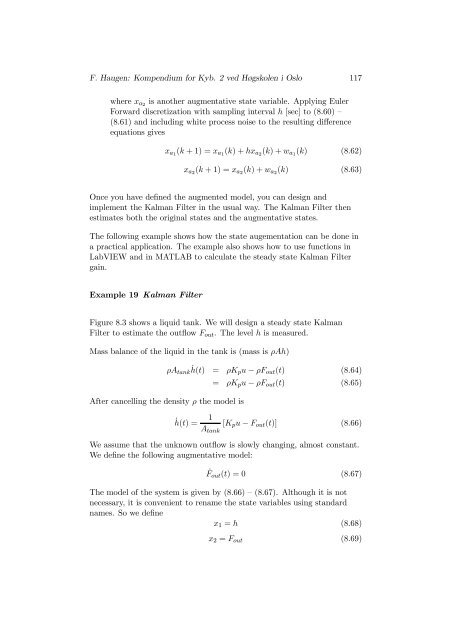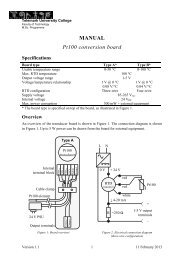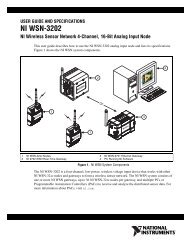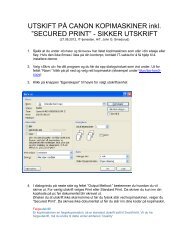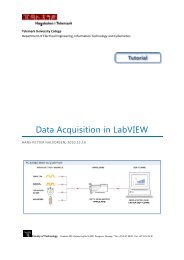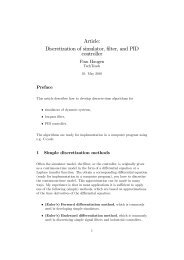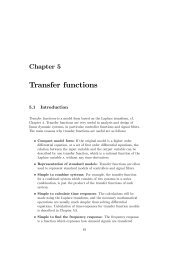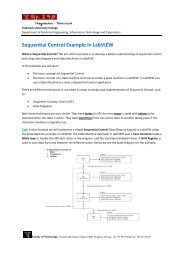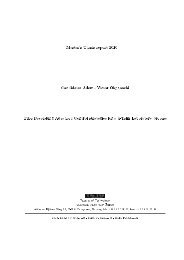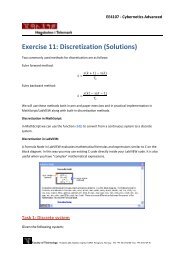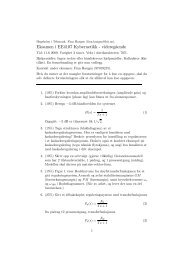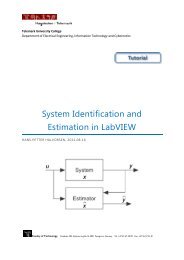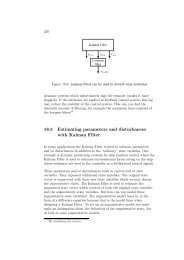State estimation with Kalman Filter
State estimation with Kalman Filter
State estimation with Kalman Filter
You also want an ePaper? Increase the reach of your titles
YUMPU automatically turns print PDFs into web optimized ePapers that Google loves.
F. Haugen: Kompendium for Kyb. 2 ved Høgskolen i Oslo 117<br />
where x a2 is another augmentative state variable. Applying Euler<br />
Forward discretization <strong>with</strong> sampling interval h [sec] to (8.60) —<br />
(8.61) and including white process noise to the resulting difference<br />
equations gives<br />
x a1 (k +1)=x a1 (k)+hx a2 (k)+w a1 (k) (8.62)<br />
x a2 (k +1)=x a2 (k)+w a2 (k) (8.63)<br />
Once you have defined the augmented model, you can design and<br />
implement the <strong>Kalman</strong> <strong>Filter</strong> in the usual way. The <strong>Kalman</strong> <strong>Filter</strong> then<br />
estimates both the original states and the augmentative states.<br />
The following example shows how the state augementation can be done in<br />
a practical application. The example also shows how to use functions in<br />
LabVIEW and in MATLAB to calculate the steady state <strong>Kalman</strong> <strong>Filter</strong><br />
gain.<br />
Example 19 <strong>Kalman</strong> <strong>Filter</strong><br />
Figure 8.3 shows a liquid tank. We will design a steady state <strong>Kalman</strong><br />
<strong>Filter</strong> to estimate the outflow F out .Thelevelh is measured.<br />
Mass balance of the liquid in the tank is (mass is ρAh)<br />
ρA tank ḣ(t) = ρK p u − ρF out (t) (8.64)<br />
= ρK p u − ρF out (t) (8.65)<br />
After cancelling the density ρ the model is<br />
ḣ(t) = 1<br />
A tank<br />
[K p u − F out (t)] (8.66)<br />
We assume that the unknown outflow is slowly changing, almost constant.<br />
We define the following augmentative model:<br />
˙ F out (t) =0 (8.67)<br />
The model of the system is given by (8.66) — (8.67). Although it is not<br />
necessary, it is convenient to rename the state variables using standard<br />
names. So we define<br />
x 1 = h (8.68)<br />
x 2 = F out (8.69)


